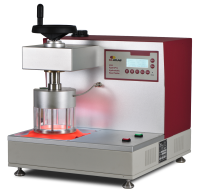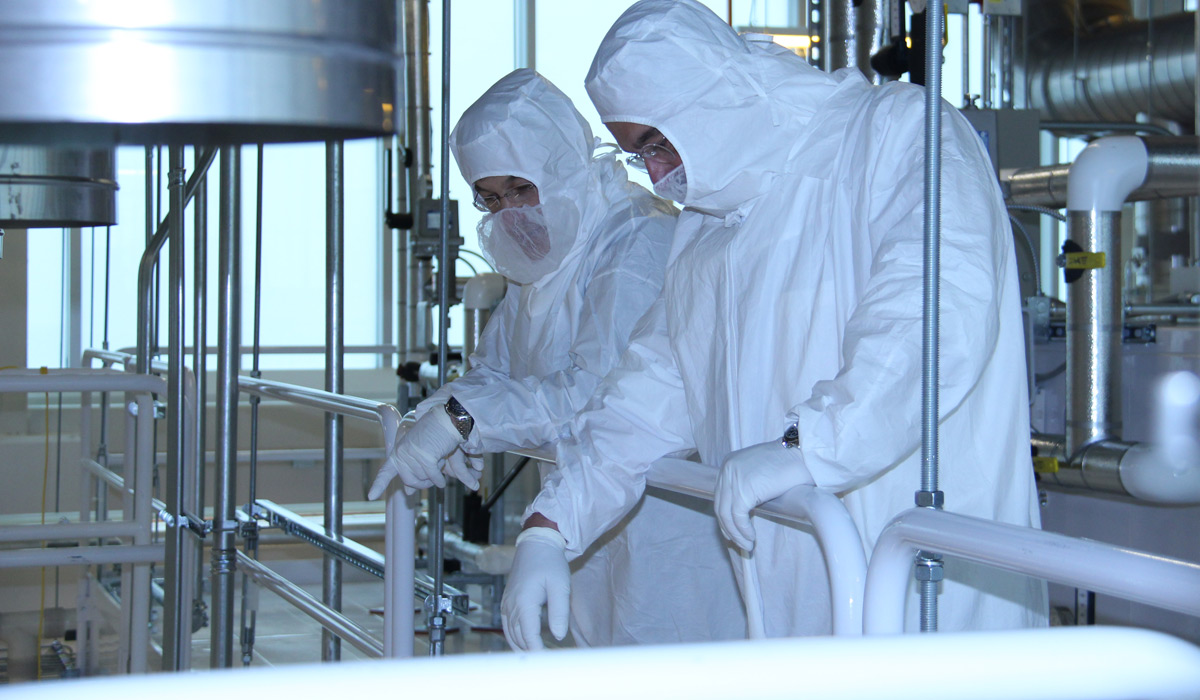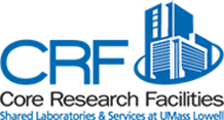PPE Testing Facility (Fabric Discovery Center): 4 Resources found
 | Hydrostatic Head Testing SDL Atlas HydroPro M018 PLEASE NOTE THAT SELECTING A DATE ON THE RESERVATION CALENDAR SECURES YOU A SPOT IN OUR TESTING QUEUE. ONCE WE RECEIVE YOUR SAMPLES, OUR TESTING TEAM WILL NOTIFY YOU OF YOUR TESTING DATE.
For further information, please contact Mark Keene at mark_keene@uml.edu.
Hydrostatic head testing measures the resistance of a fabric to the penetration of water under hydrostatic pressure. One surface of the fabric is subjected to a hydrostatic pressure at a constant increasing rate. The test stops when three points of leakage, water droplets, appear on the other side of the fabric. The tester complies with AATCC Test Method 127, Water Resistance: Hydrostatic Pressure Test, as well as other standards.
1 set (1-5 samples)
2 sets (6-10 samples)
3 sets (11-15 samples)
UML is not a NIOSH or FDA certified laboratory. Any results generated in our lab are intended as a tool to guide development and do not qualify towards certification of PPE devices by NIOSH or any other agency.
Pricing shown above applies to for-profit, industry customers. Pricing for non-profit organizations, including health care providers, emergency responders, and other academic or government groups is available.
| Industry Rates
|
 | Particle Filtration Efficiency Testing Automatic TSI 8130 THIS TESTING SERVICE IS PERFORMED BY TRAINED, UML STAFF ONLY. PLEASE NOTE THAT SELECTING A DATE ON THE RESERVATION CALENDAR SECURES YOU A SPOT IN OUR TESTING QUEUE. ONCE WE RECEIVE YOUR SAMPLES, OUR TESTING TEAM WILL NOTIFY YOU OF YOUR TESTING DATE.
DUE TO THE LONG DURATION OF THIS TEST, PLEASE ALLOW AN EXTRA WEEK FOR FULL LOAD ORDERS TO BE COMPLETED.
For further information, please contact Mark Keene at mark_keene@uml.edu.
Particle filtration efficiency testing is used to determine the particle filtering efficiency and pressure drop of material, filter cartridges, filters, masks and respirators. The instrument uses a 2% sodium chloride (NaCl) solution in distilled water. Associated regulations are USA commercial respirator regulation 42 CFR part 84 subpart K and NIOSH Procedure No. TEB-APR-STP-0059, Determination of Particulate Filter Efficiency Level for N95 Series Filters Against Solid Particulates for Non-Powered, Air-Purifying Respirators Standard Test Procedure (STP).
Pre-screen/NaCl
1 set (1-5 samples)
2 sets (6-10 samples)
3 sets (11-15 samples)
4 sets (16-20 samples)
5 sets (21-25 samples)
Price for Full Loading Test/NaCl is for one sample.
The sample will be loaded with the NaCl aerosol until the aerosol mass loading level reaches 200+/-5 mg (single configuration – most common) or 100+/- 5 mg (double configuration) or 66.7 +/- 5mg (triple configuration). Penetration will be measured and recorded at approximately one minute intervals. The highest penetration will be recorded as the maximum penetration of that sample.
UML is not a NIOSH or FDA certified laboratory. Any results generated in our lab are intended as a tool to guide development and do not qualify towards certification of PPE devices by NIOSH or any other agency.
Pricing shown above applies to for-profit, industry customers. Pricing for non-profit organizations, including health care providers, emergency responders, and other academic or government groups is available.
| Industry Rates
|
| Synthetic Blood Penetration Testing Gester GT-RA01 PLEASE NOTE THAT SELECTING A DATE ON THE RESERVATION CALENDAR SECURES YOU A SPOT IN OUR TESTING QUEUE. ONCE WE RECEIVE YOUR SAMPLES, OUR TESTING TEAM WILL NOTIFY YOU OF YOUR TESTING DATE.
For further information, please contact Mark Keene at mark_keene@uml.edu.
Synthetic blood penetration testing determines the resistance of medical protective masks to the penetration of a certain volume synthetic blood in a controlled time under different test pressures that simulates the human bodys average blood pressure of 10.6kPa, 16kPa, and 21.3kPa; which corresponds to spraying speeds of 450cm/s, 550cm/s, 635cm/s respectively. The instrument can also be used to determine the blood penetration resistance of other coating materials. The sample fixing device is convex to simulate the use state of a mask and has a test target area without damaging the sample. Associated standards are ASTM F2100, ASTM F1862 and others.
1 set (1-5 samples, 1 pressure)
2 sets (6-10 samples, 1 pressure)
3 sets (11-15 samples, 1 pressure)
4 sets (16-20 samples, 1 pressure)
5 sets (21-25 samples, 1 pressure)
6 sets (26-32 samples, 1 pressure)
UML is not a NIOSH or FDA certified laboratory. Any results generated in our lab are intended as a tool to guide development and do not qualify towards certification of PPE devices by NIOSH or any other agency.
Pricing shown above applies to for-profit, industry customers. Pricing for non-profit organizations, including health care providers, emergency responders, and other academic or government groups is available.
| Industry Rates
|
| Water Impact Penetration Testing PLEASE NOTE THAT SELECTING A DATE ON THE RESERVATION CALENDAR SECURES YOU A SPOT IN OUR TESTING QUEUE. ONCE WE RECEIVE YOUR SAMPLES, OUR TESTING TEAM WILL NOTIFY YOU OF YOUR TESTING DATE.
For further information, please contact Mark Keene at mark_keene@uml.edu.
Water impact penetration testing measures the resistance of fabrics to the penetration of water by impact. A specified amount of water is sprayed against a taut specimen against adsorbent blotting paper. The paper is weighed before and after testing to determine the amount of water penetration. The test complies with AATCC Test Method 42, Water Resistance: Impact Penetration Test.
1 set (1-5 samples)
2 sets (6-10 samples)
3 sets (11-15 samples)
UML is not a NIOSH or FDA certified laboratory. Any results generated in our lab are intended as a tool to guide development and do not qualify towards certification of PPE devices by NIOSH or any other agency.
Pricing shown above applies to for-profit, industry customers. Pricing for non-profit organizations, including health care providers, emergency responders, and other academic or government groups is available.
| Industry Rates
|


